report: CDI modification
#1
On December 29, 2006 I successfully installed the CDI from a 1997 KLX 250SR.
Here's my report on the install and my impressions after three months of riding with this mod.
First, the basic data:
[blockquote]
KLX 250 CDI
p/n = 21119-1579 ignitor
mass = 168 grams
KLX 250SRCDI
p/n = 21119-1416 ignitor
mass = 302 grams
cost = ¥28,245 Japanese Yen = $245 US Dollars[/blockquote]
Timing comparison:
[blockquote]
KLX 250
10 deg before TDC at 1300 rpm
25 deg before TDC at 5000 rpm
rev limiter kicks in around 10,500 rpm, kills spark around 11,000 rpm
KLX 250SR (this is the street-legal version of the KLX 250R previously sold in the US)
5 deg before TDC at 1700 rpm
40 deg before TDC at 5000 rpm
no rev limiter
KLX 300R
5 deg before TDC at 1700 rpm
40 deg before TDC at 3000 rpm
no rev limiter[/blockquote]
Why did I do this mod?
I wanted my KLX to be the surly dirt bike that it was originally designed to be, not the dumbed-down bike that I rode off the dealer's lot.
Do I like this mod?
Yes. While I can't tell any increase in power or torque, there is anoticableincrease in throttle response. There used to be a stutter when I'd whip the throttle open from idle position, but that's gone now. I find the low rpm range to be smoother and more stable than before. Also, the bike seems easier to start now.
Is it worth the cost?
Difficult question, but probably not. It's a lot of money for this level of performance enhancement, IMO. For a little more money you can get a carb with an accelerator pump.
Here's my write up on the installation:
Here's the wiring diagram that's been floated around this forum before. It's not entirely accurate. The KLX 250SR ignitor has a 4-pin connector, a 3-pin connector, and a 2-pin connector. The diagram below shows 3-pin, 3-pin, and 2-pin for the 250SR. Belowis the wiring scheme I used.
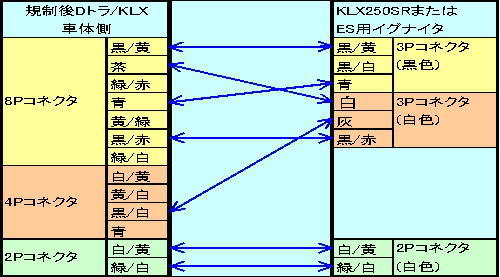
(black-yellow wire on 8-pin connector of bike)connects to(black-yellow wire of 3-pin connector on new CDI)
(brown wire on 8-pin connector of bike)connects to(white wire of 4-pin connector on new CDI)
(blue wire on 8-pin connector of bike)connects to(blue wire of 3-pin connector on new CDI)
(black-red wire on 8-pin connector of bike)connects to(black-red wire of 4-pin connector on new CDI)
(black-white wire on 4-pin connector of bike)connects to(grey wire of 4-pin connector on new CDI)
The 2-pin connectors of the bike and new CDI area direct plug-in.
All remaining wires are unnecessary (I cut mine off).
The first thing I did before cutting any wires was to test the new CDI to make sure it worked and that I had the right wiring scheme.
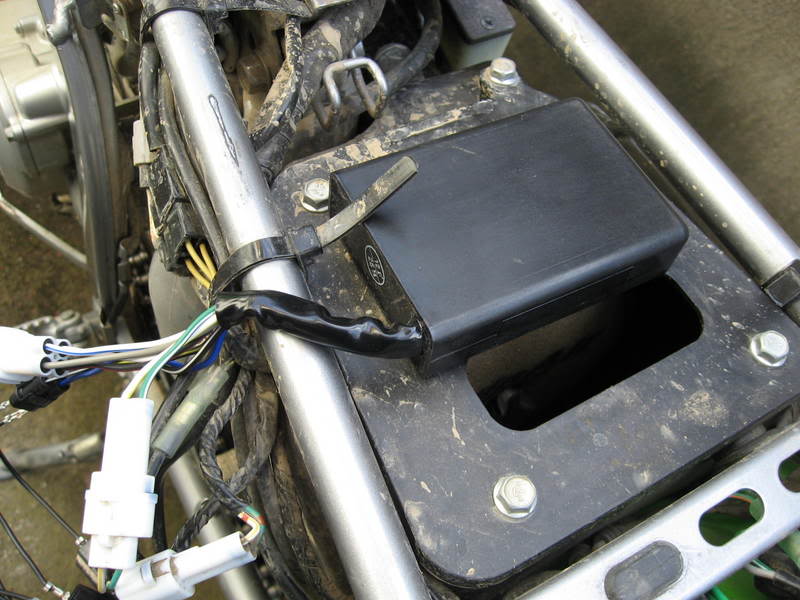
I made little make-shift connectors to connect the different shaped plugs.
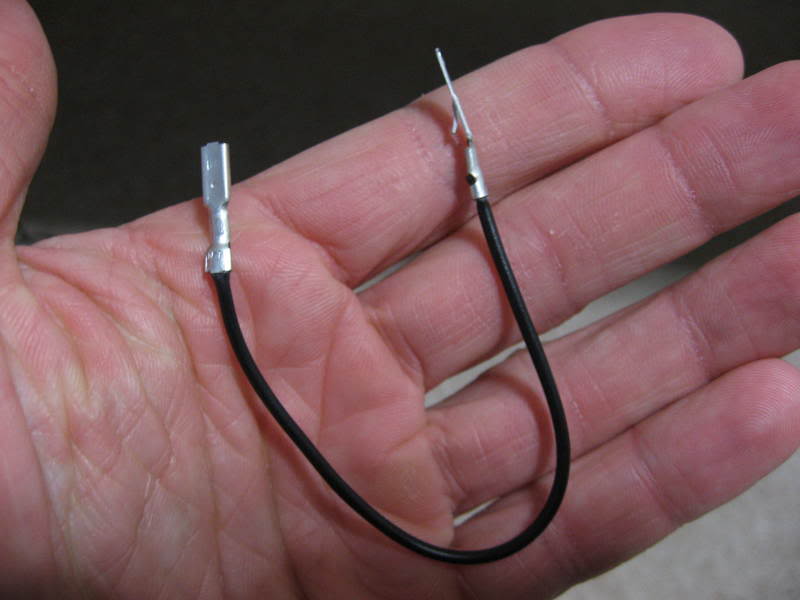
Here's what it looked like when I connected it together with the test connectors.
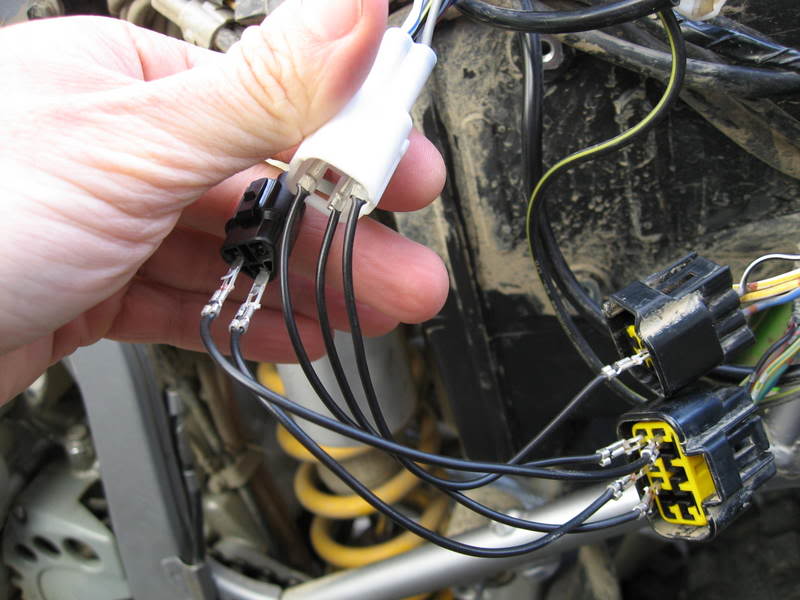
The 2-pin connectors are a direct plug in.
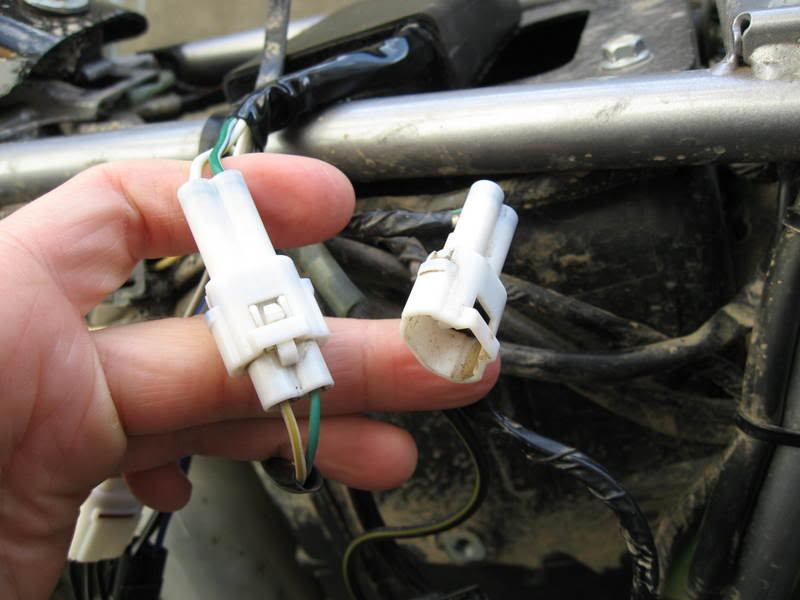
I was amazed that the engine started and the bike ran on the first try with my test set up.
The new CDI is bigger than the stock one.
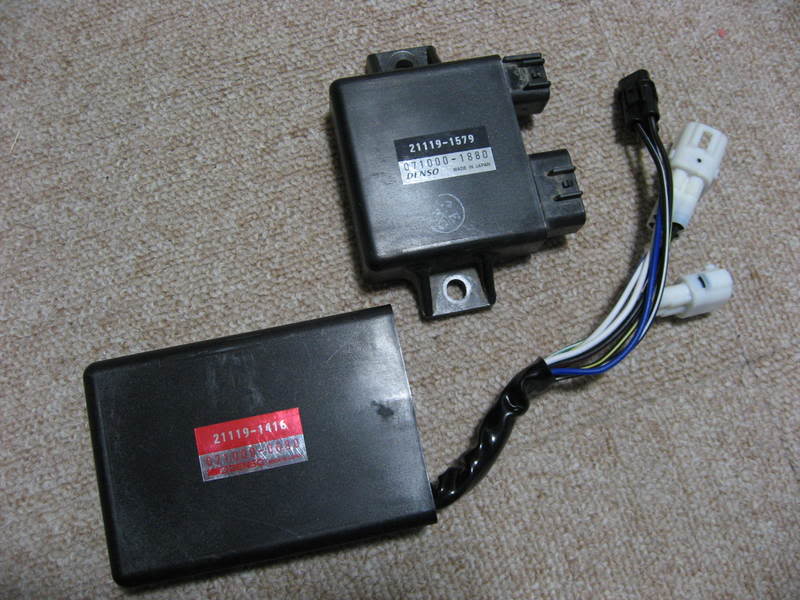
I decided to mount it on top of my airbox lid where my snorkle used to be. To do that I had to modify my airbox lid. Here are the before and after shots.
Before:
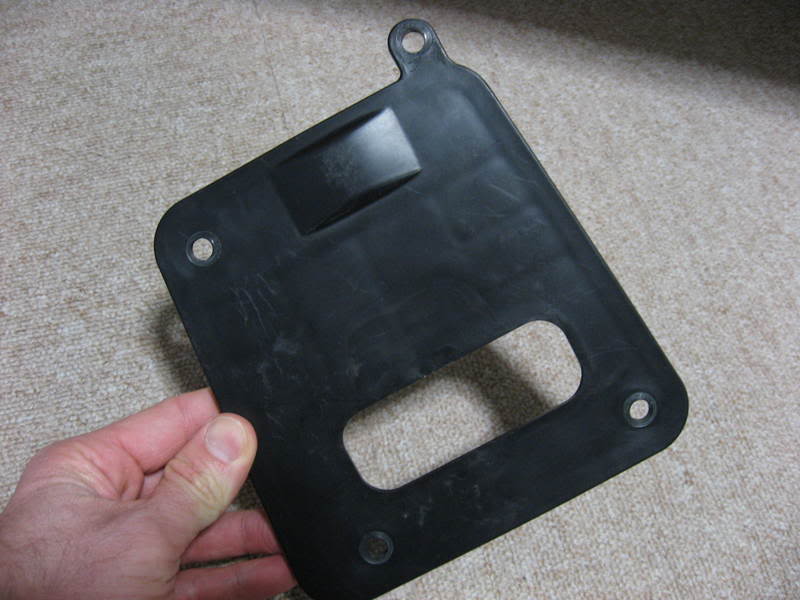
After:
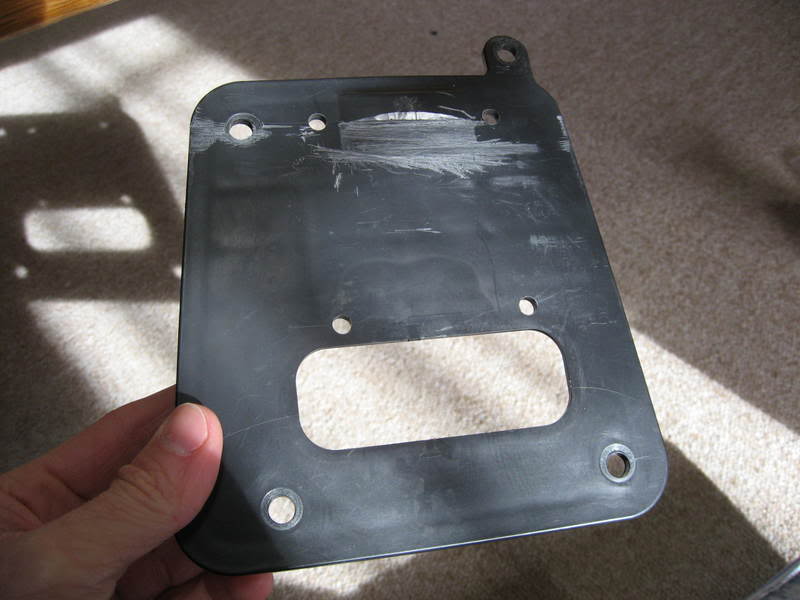
Next I mounted the new CDI on the airbox lid.

Next I clipped off the old 3-pin and 4-pin connectors and re-wired with a new connector I bought at the hardware store.



I clipped the wires on the bike and put on the new connector pieces there too.

After installing the new CDI I found that the wires previously connected to the 8-pin and 4-pin connectors of the bike were getting pinched between the frame of the bike and the airbox lid. So I trimmed a bit of the rim off the lid. You can see the spot I trimmed off just above my fingers in the photo above.
Well, there you have it.I like this mod for the improved throttle response in the low rpm's andbecause it brings my bikecloser totheoff-road machineit was originally intended to be. This wasn't a difficult mod, but it was a bit expensive for the performance gains achieved. FWIW, I usually short shift and never get near where the rev limiter would be.
PS: I recently rode a friend's WR 250. It's a great bike, but it's got no where near the low-end grunt of the KLX. I think the KLX is a pretty amazing little machine for the price!
Here's my report on the install and my impressions after three months of riding with this mod.
First, the basic data:
[blockquote]
KLX 250 CDI
p/n = 21119-1579 ignitor
mass = 168 grams
KLX 250SRCDI
p/n = 21119-1416 ignitor
mass = 302 grams
cost = ¥28,245 Japanese Yen = $245 US Dollars[/blockquote]
Timing comparison:
[blockquote]
KLX 250
10 deg before TDC at 1300 rpm
25 deg before TDC at 5000 rpm
rev limiter kicks in around 10,500 rpm, kills spark around 11,000 rpm
KLX 250SR (this is the street-legal version of the KLX 250R previously sold in the US)
5 deg before TDC at 1700 rpm
40 deg before TDC at 5000 rpm
no rev limiter
KLX 300R
5 deg before TDC at 1700 rpm
40 deg before TDC at 3000 rpm
no rev limiter[/blockquote]
Why did I do this mod?
I wanted my KLX to be the surly dirt bike that it was originally designed to be, not the dumbed-down bike that I rode off the dealer's lot.
Do I like this mod?
Yes. While I can't tell any increase in power or torque, there is anoticableincrease in throttle response. There used to be a stutter when I'd whip the throttle open from idle position, but that's gone now. I find the low rpm range to be smoother and more stable than before. Also, the bike seems easier to start now.
Is it worth the cost?
Difficult question, but probably not. It's a lot of money for this level of performance enhancement, IMO. For a little more money you can get a carb with an accelerator pump.
Here's my write up on the installation:
Here's the wiring diagram that's been floated around this forum before. It's not entirely accurate. The KLX 250SR ignitor has a 4-pin connector, a 3-pin connector, and a 2-pin connector. The diagram below shows 3-pin, 3-pin, and 2-pin for the 250SR. Belowis the wiring scheme I used.

(black-yellow wire on 8-pin connector of bike)connects to(black-yellow wire of 3-pin connector on new CDI)
(brown wire on 8-pin connector of bike)connects to(white wire of 4-pin connector on new CDI)
(blue wire on 8-pin connector of bike)connects to(blue wire of 3-pin connector on new CDI)
(black-red wire on 8-pin connector of bike)connects to(black-red wire of 4-pin connector on new CDI)
(black-white wire on 4-pin connector of bike)connects to(grey wire of 4-pin connector on new CDI)
The 2-pin connectors of the bike and new CDI area direct plug-in.
All remaining wires are unnecessary (I cut mine off).
The first thing I did before cutting any wires was to test the new CDI to make sure it worked and that I had the right wiring scheme.

I made little make-shift connectors to connect the different shaped plugs.

Here's what it looked like when I connected it together with the test connectors.

The 2-pin connectors are a direct plug in.

I was amazed that the engine started and the bike ran on the first try with my test set up.
The new CDI is bigger than the stock one.

I decided to mount it on top of my airbox lid where my snorkle used to be. To do that I had to modify my airbox lid. Here are the before and after shots.
Before:

After:

Next I mounted the new CDI on the airbox lid.

Next I clipped off the old 3-pin and 4-pin connectors and re-wired with a new connector I bought at the hardware store.



I clipped the wires on the bike and put on the new connector pieces there too.

After installing the new CDI I found that the wires previously connected to the 8-pin and 4-pin connectors of the bike were getting pinched between the frame of the bike and the airbox lid. So I trimmed a bit of the rim off the lid. You can see the spot I trimmed off just above my fingers in the photo above.
Well, there you have it.I like this mod for the improved throttle response in the low rpm's andbecause it brings my bikecloser totheoff-road machineit was originally intended to be. This wasn't a difficult mod, but it was a bit expensive for the performance gains achieved. FWIW, I usually short shift and never get near where the rev limiter would be.
PS: I recently rode a friend's WR 250. It's a great bike, but it's got no where near the low-end grunt of the KLX. I think the KLX is a pretty amazing little machine for the price!
#2
Great write up and pictures. I have been to the MX races and have heard the limiters and its designed to keep the bikes from blowing up, are you going to ride it past the red-line? Just curious.
#4
ORIGINAL: EMS_0525
deej you do know our bike has a rev limiter right?
deej you do know our bike has a rev limiter right?

#7
KLX 250
10 deg before TDC at 1300 rpm
25 deg before TDC at 5000 rpm
rev limiter kicks in around 10,500 rpm, kills spark around 11,000 rpm
KLX 250SR (this is the street-legal version of the KLX 250R previously sold in the US)
5 deg before TDC at 1700 rpm
40 deg before TDC at 5000 rpm
no rev limiter
10 deg before TDC at 1300 rpm
25 deg before TDC at 5000 rpm
rev limiter kicks in around 10,500 rpm, kills spark around 11,000 rpm
KLX 250SR (this is the street-legal version of the KLX 250R previously sold in the US)
5 deg before TDC at 1700 rpm
40 deg before TDC at 5000 rpm
no rev limiter
Can changing to a KLX250SR CDI really make a difference? If so, whats the theory behind the change.
Also, I think thatone of the inputs hanging out in thebreeze is the throttle position sensor. Can someone confirm that thisisn't an input in the KLX250SR CDI?
Thanks.
#9
ORIGINAL: mooredan
Can changing to a KLX250SR CDI really make a difference? If so, whats the theory behind the change.
Also, I think thatone of the inputs hanging out in thebreeze is the throttle position sensor. Can someone confirm that thisisn't an input in the KLX250SR CDI?
Thanks.
Can changing to a KLX250SR CDI really make a difference? If so, whats the theory behind the change.
Also, I think thatone of the inputs hanging out in thebreeze is the throttle position sensor. Can someone confirm that thisisn't an input in the KLX250SR CDI?
Thanks.
The 250SR CDI does eliminate the throttle position sensor.
#10
Yes, my dealer is also using the SR CDI box on his bike and although a dyno won't show any diffence in HP or tourque, most riders report an improvement in throttle response.
Most people opt for the 250SR box instead of the KLX300R boxbecause the 300 ignitor advances too far, too quickly for our displacement. It has to do with keeping the low end torque optimal. The more retarded timing curve on the 250S has more to do with emissions than anything else. The cam profiles on the 250SR and 250S are identical, so that's not an issue.
You can also do the conversion completely plug-n-play here in Japan, but the they want almost 150.00USD for the adapter harness. Looking at the wiring diagrams for both bikes, it looks like the mod is fairly simple. I guess it's just a case of whether you want to be cutting and splicing the original wiring to save about $120.00US.
Most people opt for the 250SR box instead of the KLX300R boxbecause the 300 ignitor advances too far, too quickly for our displacement. It has to do with keeping the low end torque optimal. The more retarded timing curve on the 250S has more to do with emissions than anything else. The cam profiles on the 250SR and 250S are identical, so that's not an issue.
You can also do the conversion completely plug-n-play here in Japan, but the they want almost 150.00USD for the adapter harness. Looking at the wiring diagrams for both bikes, it looks like the mod is fairly simple. I guess it's just a case of whether you want to be cutting and splicing the original wiring to save about $120.00US.


